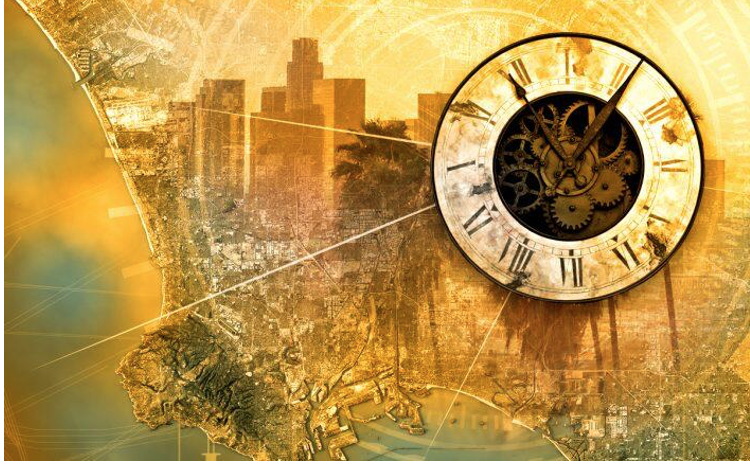CommentsTHE STATE OF OUR STATE - Has the California proposition changed fundamentally? And does it matter for real estate?
The answer to the first question is yes—the state had a net population decline in 2021, the first drop since it began annual counts more than a century ago. That followed another historic reversal, noted in 2018, when the number of Californians leaving the state exceeded new arrivals from around the world for the first time.
Those trendlines matter in ways that headlines about California being over – a periodic theme in the national media for decades – never did.
And they matter to real estate, especially in Southern California—a place that willed itself out of chaparral country, midwifed the birth of Hollywood, invented the Jet Age, redefined the American Dream and became a West Coast bookend to Ellis Island.
All of that grew out of a real estate hustle that peddled parched land as paradise. The scheme relied on constant population growth, presuming eternal desire for Southern California’s lifestyle and land.
The recent dip in population suggests that presumption has been punctured.
The decline is real – an empirical data point. It also aligns with perceptions in many precincts that Southern California’s promise is being spoiled by public corruption, homeless encampments, and a push for residential density that flies in the face of the backyard-as-rec-room culture that has defined the place.
There are more specific reasons for concern in a recent report from Chapman University titled “Restoring the California Dream,” penned by Joel Kotkin and Marshall Toplansky.
You can check the report yourself here—but for now consider this brief excerpt and the challenge it sums up:
“Nearly 80 percent of all jobs created in the state over the past decade paid less than the median income, a percentage far below our prime competitors. The inconvenient truth is that in key metrics such as housing costs and income growth, most Californians are doing worse than their counterparts elsewhere.”
A clear takeaway is that California can no longer be sure it is a magnet for newcomers from around the nation and world. Texas beckons, and for every person who just has to live near the ocean there are eight or 10 who just want their own house. California can no longer count on Californians either. Florida looks better to a lot of well-heeled folks who have grown tired of getting hit with tax hikes only to see the public sector fail to perform the basic chores of government—shelter for the homeless in Los Angeles, public safety in San Francisco, getting unemployment checks sent out of Sacramento during a pandemic.
The report from Chapman makes a lot of sense but is gaining little traction with public officials. That’s likely because the public sector has gotten a reprieve from a reckoning thanks to a gusher of tax revenue from initial public offerings and capital gains on shares of tech outfits from Silicon Valley to Silicon Beach.
We all know that the stock market can’t go up forever – tech stocks have already taken a hiding this month. So it’s important to ask how long California can live in denial.
New York City’s history might offer a hint. Comparisons of California to New York are plentiful – and generally unwise—but there are exceptions to the rule if we look back into the
Industrial Age.
New York’s greatest challenge of recent times started in the wake of World War II, when a general-turned-politician named Dwight Eisenhower got elected president and started to build an interstate highway system. It was a defense project—despite its obvious civilian applications—inspired by Eisenhower’s experience with the logistics of invading Europe.
New York was the largest center of industrial jobs in the U.S. in the early 1950s, when the interstate highway system began to take shape. The highways soon sped up the development of suburbs and new centers of industry, allowing the country to spread out— and eroding New York’s dominant position, prompting the first post-industrial transition for a major American city.
It didn’t go well—plenty of denial for many years—and New York was disheveled, dispirited, and broke by the 1970s. The decline continued into the 1990s, when New York finally found the political will for policies that produced a turnaround.
Now consider Southern California, where the information superhighway could have an effect similar to the toll that Eisenhower’s interstate highway system took on New York. Those physical roads opened up a world of new options for a lot of opportunities that previously had to run through Manhattan. The roadways of cyberspace have put the means of producing everything from podcasts to feature-length films within reach of just about anyone with any ambition anywhere in America. That’s the sort of stuff that used to run by default through the dream factory of Southern California.
The region’s dominant city and driving force—L.A.—is looking disheveled these days, like a place that’s just a recession away from being broke. Walk a few blocks from City Hall—or drive around and check the freeway underpasses – and L.A. feels like New York circa 1970.
That comparison might be taken to mean there’s another decade or so before the City of Angels is forced to face its demons.
Don’t count on having that much time, though – the clock ticks faster in the Digital Age.
(Jerry Sullivan is a writer for TheRealDeal.com where this article was first published.)






